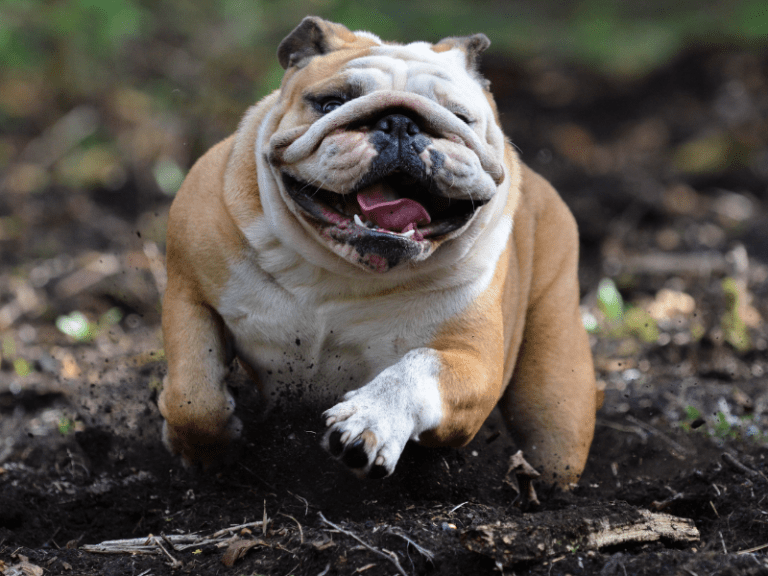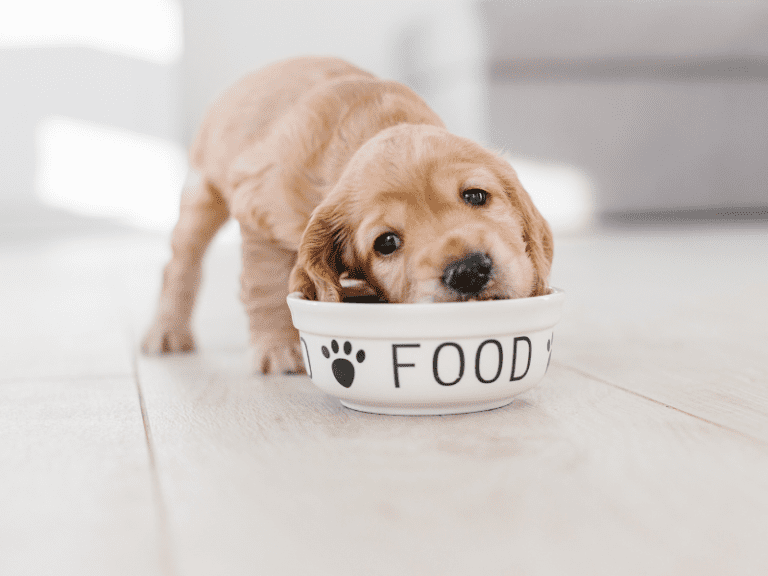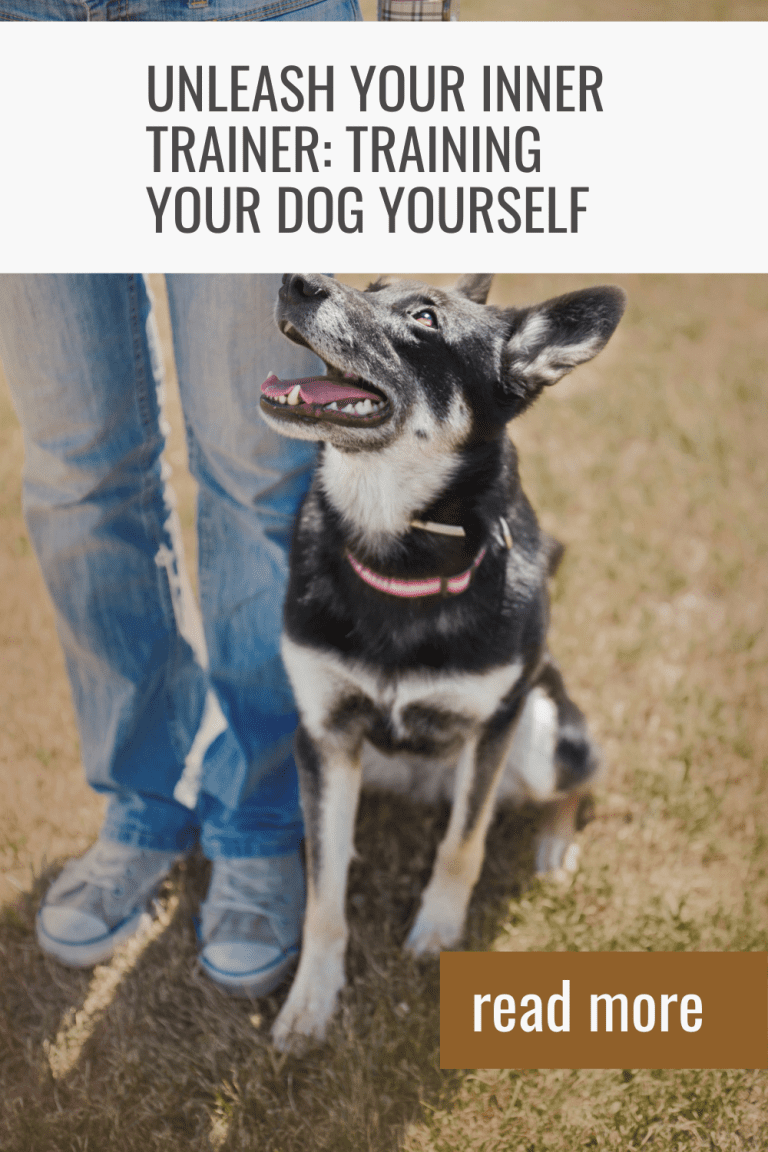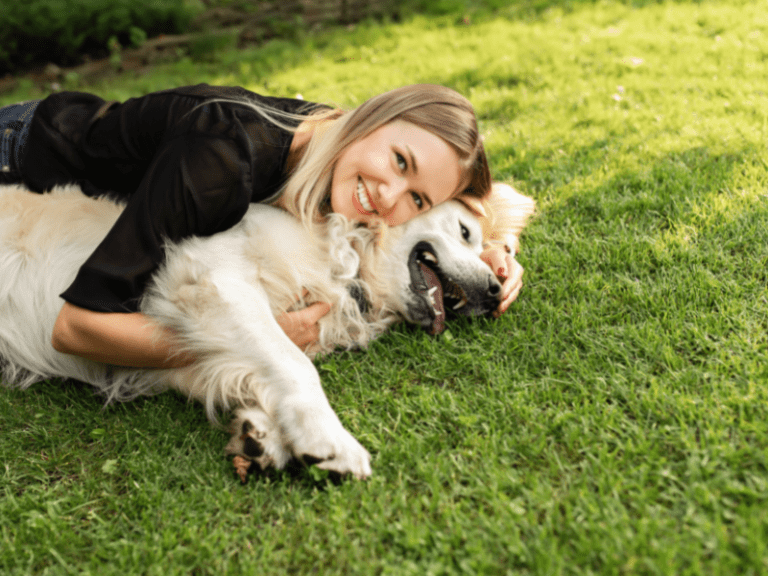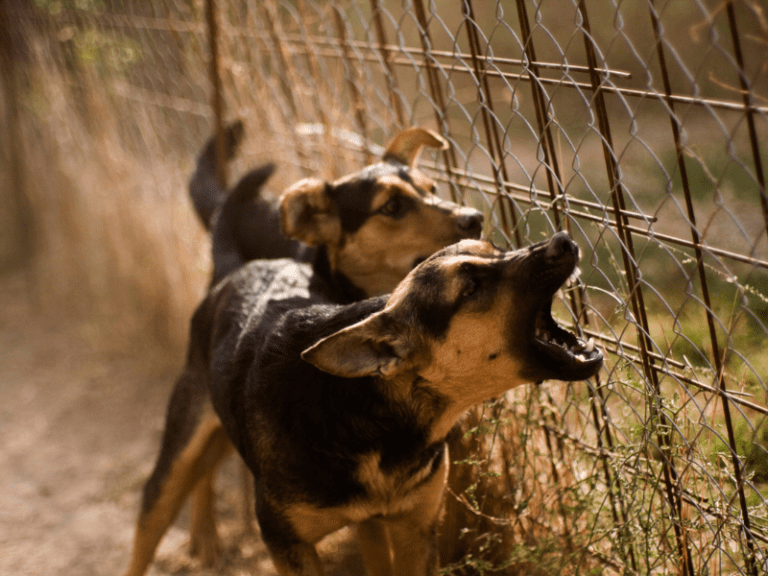Joyful Journey with Your Pup
FULL DISCLOSURE: The links I share in this course ARE my affiliate links. This means I earn a commission, at no extra cost to you. In fact, sometimes you’ll get a discount or free credits just FOR using my link. 🙂
If you're a dog owner, you know that your pup is more than just a pet – they're a member of your family. As such, you want to make sure that they're happy, healthy, and enjoying life to the fullest. But sometimes, the hustle and bustle of daily life can make it difficult to prioritize your furry friend. That's why we've put together this guide to help you make every day with your pup a joyful journey.
From morning walks to playtime in the park, there are countless ways to bond with your dog and make their day a little brighter. But with so many options, it can be overwhelming to know where to start. That's where this guide comes in. We'll provide you with practical tips and advice to help you create a routine that works for you and your pup, so you can both look forward to spending time together each day. So grab your leash and let's get started!
Understanding Your New Puppy

Bringing home a new puppy is an exciting experience, but it can also be overwhelming. Understanding your new puppy is the first step to making every day a joyful journey. Here are some tips to help you embark on this joyful journey:
Temperament
Every puppy has its own unique temperament, which can be influenced by genetics, early experiences, and socialization. Some puppies may be more outgoing and adventurous, while others may be shy and cautious. Understanding your puppy's temperament can help you tailor your approach to training and make the joyful journey more rewarding for both of you.
Smell, See, and Hear
On this joyful journey, remember that puppies experience the world through their senses. Understanding how they perceive their environment is a key component of that journey. Puppies have a keen sense of smell, which they use to explore their surroundings and communicate with other dogs. Their journey is often shaped by what they smell, see, and hear, especially when it comes to socializing with humans.
Body Language
As you continue on this joyful journey with your pup, you'll find that puppies communicate with their bodies, using a variety of gestures and postures to express their emotions. Understanding this body language is pivotal in ensuring the journey remains joyful. For example, a wagging tail can indicate happiness or excitement, while a tucked tail may signal that they're feeling apprehensive.
Training and Socialization
Training and socialization are two key pit stops on your joyful journey with your puppy. They are crucial for helping your puppy develop into a well-behaved and well-adjusted adult dog. Positive reinforcement training methods, like clicker training, not only teach your puppy basic commands but also add joy to the journey. Socialization ensures that the joyful journey is also shared with other dogs and people in a safe and positive manner.
Creating a Welcoming Environment on this Joyful Journey

Embarking on this joyful journey with your new pup starts at home. When you bring your furry friend home, the first step in your joyful journey together is to create a welcoming environment for them. This sets the tone for the many days of the joyful journey ahead. Here's how you can infuse the spirit of the “joyful journey” into your home environment:
- Designate a space for your pup: Every joyful journey has a comfortable starting point. Whether it's a crate or a designated area in your home, having a space that is just for your pup can be the first step in this joyful journey, helping them feel secure. Ensure this joyful journey spot is complete with a cozy bed and their favorite toys.
- Make your home safe: As you progress on your joyful journey with your pup, you'll quickly realize that puppies are innately curious and love to explore. To ensure that this exploration remains a part of the joyful journey, safeguard your home. Remove potential hazards like electrical cords or harmful plants, so each discovery is a positive step on their joyful journey.
- Stick to a routine: One of the hallmarks of a joyful journey is predictability. Dogs find comfort in routine, so to make their journey truly joyful, establish consistent patterns early on. This means setting a regular bedtime, a feeding schedule, and playtimes. The rhythm of routine can enhance the joy in the journey.
- Use positive reinforcement: Every joyful journey is marked by moments of affirmation and celebration. Positive reinforcement turns everyday actions into memorable milestones on your joyful journey with your pup. Whenever they make progress or show good behavior, acknowledge it. Praise them, and reward their efforts with treats or toys, making each day a step forward in your shared joyful journey.
Establishing a Routine
Establishing a routine is crucial for ensuring your pup's happiness and well-being. Dogs thrive on consistency and predictability, so creating a daily schedule will help your furry friend feel secure and comfortable in their environment. Here are a few tips for establishing a routine:
Schedule
Set a schedule for your pup's daily activities such as mealtime, potty breaks, naps, and bedtime. Dogs are creatures of habit and thrive on routine, so try to stick to a consistent schedule as much as possible. This will also make it easier for you to plan your day around your pup's needs.
Mealtime
Feeding your pup at the same time every day is essential for maintaining their digestive health and preventing obesity. Make sure to choose a high-quality dog food that meets your pup's nutritional needs, and measure out their portions to avoid overfeeding.
Potty Breaks
Potty breaks should be scheduled every few hours, depending on your pup's age and bladder capacity. Take your pup to the same spot every time to establish a routine and encourage them to go potty quickly.
Naps
Dogs need plenty of rest throughout the day, especially puppies. Create a cozy spot for your pup to nap, and encourage them to take naps at the same time every day.
Bedtime
Establishing a bedtime routine is crucial for helping your pup wind down and get a good night's sleep. Create a comfortable sleeping area for your pup, and make sure to stick to a consistent bedtime every night.
By establishing a routine, you can help your pup feel secure and comfortable in their environment. Stick to a consistent schedule for mealtime, potty breaks, naps, and bedtime, and your furry friend will thank you for it!
Training Basics
Training your pup is an essential part of creating a happy and healthy relationship with your furry friend. Whether you are starting with a puppy or an older dog, it is important to establish a routine and stick to it.
Positive reinforcement is a highly effective training method that rewards good behavior rather than punishing bad behavior. This method encourages your pup to repeat the behaviors you want to see and helps build trust and a strong bond between you and your pup.
Basic commands such as sit, stay, come, and heel are essential for your pup's safety and well-being. Consistently practicing these commands will help your pup understand what is expected of them and make them more obedient.
A training routine should include short, frequent sessions that focus on one or two commands at a time. This will prevent your pup from becoming overwhelmed and help them retain the information better.
Training classes, such as puppy classes, can be a great way to socialize your pup and learn new training techniques. Look for classes that use positive reinforcement and have experienced trainers.
Remember to be patient and consistent with your training. It takes time and effort to train your pup, but the rewards are well worth it. With a little bit of dedication and love, you can make every day with your pup a joyful journey.
Socialization and Interaction

Socialization is an essential aspect of raising a happy and healthy pup. It involves exposing your furry friend to new people, animals, and environments to help them develop social skills and become well-adjusted members of the pack.
Interacting with your pup daily is crucial to building a strong bond and helping them feel loved and secure. Playtime, cuddles, and training sessions are all excellent ways to interact with your pup and help them develop positive behavior.
When introducing your pup to new people, it's important to do so gradually and in a controlled environment. Young children and adult dogs should be introduced slowly and carefully to avoid any potential conflicts.
Teaching your pup proper social skills is also essential. Encourage positive behaviors, such as sharing toys and playing nicely with other pups. Use positive reinforcement techniques, such as treats and praise, to reinforce good behavior.
Overall, socialization and interaction are crucial components of raising a happy and well-adjusted pup. By exposing your furry friend to new experiences and teaching them proper social skills, you can help them become a confident and well-behaved member of your pack.
Play and Exercise
Playing and exercising with your pup is a crucial part of keeping them healthy and happy. Not only does it provide physical activity, but it also helps to stimulate their minds and keep them mentally sharp. Here are some tips to make playtime and exercise a fun and enjoyable experience for both you and your furry friend.
Schedule Regular Playtime
Set aside time each day to play with your pup. Whether it's a game of fetch or tug-of-war, playing with your pup helps to release their energy and keep them active. Make sure to choose activities that are appropriate for your pup's size and age.
Incorporate Activity into Your Daily Routine
In addition to scheduled playtime, try to incorporate activity into your daily routine. Take your pup for a walk or run in the morning, play a game of fetch during your lunch break, or take a hike on the weekends. These activities not only provide exercise for your pup, but also help to strengthen your bond with them.
Provide Toys and Puzzle Toys
Toys are a great way to keep your pup entertained and mentally stimulated. Provide a variety of toys, such as chew toys, squeaky toys, and puzzle toys, to keep your pup engaged and entertained. Puzzle toys, in particular, can help to keep your pup's mind sharp and provide a fun challenge for them.
Monitor Your Pup's Energy Levels
It's important to monitor your pup's energy levels during playtime and exercise. If your pup seems tired or overheated, take a break and provide them with water. Overexertion can lead to injury or heat stroke, so it's important to take breaks and monitor your pup's energy levels.
Have Fun!
Most importantly, have fun! Playtime and exercise should be a fun and enjoyable experience for both you and your pup. Don't be afraid to try new activities and games, and always remember to reward your pup with treats and praise for a job well done.
Behavior Control and Reinforcement
As a dog owner, it's important to have control over your pup's behavior. This includes teaching them basic commands such as “sit,” “down,” “come,” and more. By doing so, you'll be able to prevent unwanted behaviors such as excessive barking or jumping on people.
To teach your pup these commands, it's important to use positive reinforcement. This means rewarding good behaviors with treats, praise, or affection. It's important to note that punishment and negative reinforcement should be avoided as they can lead to fear and aggression.
When teaching your pup new commands, it's important to be patient and consistent. Use a clear and firm voice, and repeat the command until your pup understands what is expected of them. Once they perform the desired behavior, reward them immediately to reinforce the behavior.
In addition to teaching basic commands, it's important to reinforce good behaviors throughout the day. This can include rewarding your pup for staying calm and quiet, or for walking nicely on a leash. By doing so, you'll encourage positive behavior and strengthen the bond between you and your pup.
Health and Nutrition
Your pup's health and nutrition are critical to their overall well-being. Feeding them a balanced diet and ensuring they receive regular veterinary checkups are essential to keeping them healthy.
To maintain their health, you should aim to provide your pup with a healthy and balanced diet. This means feeding them a mix of proteins, carbohydrates, and fats. You can achieve this by feeding them a high-quality dog food that meets their nutritional needs or by preparing their meals at home.
In addition to a healthy diet, it's essential to establish a feeding schedule for your pup. This helps them develop a routine and ensures they receive the proper amount of food each day. Consult with your veterinarian to determine how much and how often to feed your pup based on their age, breed, and activity level.
Regular veterinary checkups are also crucial to maintaining your pup's health. These checkups allow your veterinarian to detect any potential health issues early on and provide treatment before they become more serious. Additionally, your veterinarian can provide guidance on your pup's diet and nutrition and recommend any necessary supplements or vitamins.
By prioritizing your pup's health and nutrition, you can help ensure they live a long, happy, and healthy life.
Bonding with Your Pup

Bonding with your pup is crucial for building a strong and happy relationship. Not only does it help to establish trust and respect, but it can also improve your dog's behavior and overall well-being. Here are some tips on how to bond with your pup:
Spend Quality Time Together
One of the best ways to bond with your pup is to spend quality time together. This can include going for walks, playing games, or simply cuddling on the couch. The key is to give your pup your undivided attention and make them feel loved and appreciated.
Train Together
Training your pup is not only great for their behavior, but it can also be a bonding experience. By teaching your pup new commands and tricks, you are building trust and communication. Plus, it's a great way to have fun and bond with your furry friend.
Show Affection
Dogs thrive on affection, so it's important to show them love and affection regularly. This can include petting, cuddling, or giving them treats. By showing your pup that you care, you are building a strong bond that will last a lifetime.
Be Consistent
Consistency is key when it comes to bonding with your pup. By establishing a routine and sticking to it, you are building trust and reliability. This can include feeding, walking, and playing with your pup at the same time each day.
Have Fun
Finally, don't forget to have fun! Bonding with your pup should be a joyful experience for both of you. Whether you're playing fetch, going for a hike, or simply enjoying each other's company, make sure to have fun and cherish the time you spend together.
Dealing with Challenges
As much as you love spending time with your furry friend, there may be situations that pose a challenge. Here are some tips on how to handle them:
Frightened Pup
If your pup is frightened, it's important to remain calm and reassuring. Speak in a soothing tone and try to distract them with a toy or treat. If possible, remove them from the source of fear and gradually reintroduce them to it in a safe and controlled manner.
Disobedience
It's not uncommon for pups to test boundaries and disobey commands. Consistency is key when it comes to training. Make sure everyone in your household is on the same page with commands and rewards. If your pup continues to disobey, consider seeking the help of a professional trainer.
New Situations
Introducing your pup to new situations can be overwhelming for them. Start with small and controlled exposures, gradually increasing the intensity. Be patient and reward good behavior. If your pup is especially anxious, consider using a calming aid such as a pheromone spray or calming music.
Independence
While it's important for your pup to have independence, it's also important to establish boundaries. Set rules and stick to them. Encourage good behavior and discourage bad behavior. Providing plenty of exercise and mental stimulation can also help prevent destructive behavior.
Remember, every pup is unique and may require different approaches. Stay patient and consistent, and always prioritize your pup's safety and well-being.
Choosing the Right Accessories
When it comes to spending time with your furry friend, having the right accessories can make all the difference. Here are some things to consider when choosing accessories for your pup:
Leash
A leash is an essential accessory for any dog owner. When choosing a leash, consider the size and strength of your pup. For larger dogs, a thicker and stronger leash may be necessary. For smaller dogs, a lighter and thinner leash may be more comfortable. Additionally, you may want to consider the length of the leash. A shorter leash may give you more control, while a longer leash may give your pup more freedom to explore.
Harness
A harness can be a great alternative to a collar, especially for dogs that tend to pull on their leash. When choosing a harness, make sure it fits properly and doesn't rub or irritate your pup's skin. Look for a harness with adjustable straps so you can get the perfect fit.
Collar
A collar is not only a fashion accessory but also an important safety feature. Make sure your pup's collar fits properly and isn't too tight or too loose. You may also want to consider a collar with reflective material to make your pup more visible at night.
Chew Toy
Chewing is a natural behavior for dogs, and providing them with a chew toy can help satisfy their urge to chew and prevent destructive chewing behavior. When choosing a chew toy, look for one that is safe and durable. Avoid toys that are too small or that can easily be torn apart.
ID Tags
ID tags are a must-have accessory for any dog. In case your pup gets lost, an ID tag with your contact information can help ensure a safe return. Make sure the ID tag is securely attached to your pup's collar and includes up-to-date information.
Remember, choosing the right accessories can help make every day with your pup a joyful journey.
A Pawfect Ending
As we stroll down the winding paths of life, every moment with our pups becomes a treasured step on our joyful journey. Remember, it's not just about the destination, but the tail-wagging adventures along the way.
Dive into this guide, and let every day become a chapter worth remembering in your shared story. Happy journeying!
Frequently Asked Questions
How can I keep my dog entertained throughout the day?
To keep your dog entertained, you can try interactive toys, puzzle games, and hide-and-seek games. You can also take your dog for a walk, play fetch, or teach them new tricks.
What are some fun activities to do with my dog?
There are many fun activities you can do with your dog, such as hiking, swimming, playing in the park, and going on road trips. You can also try agility training, obedience classes, or even dog-friendly yoga.
How do I know if my dog is content in our home?
If your dog is content, they will exhibit relaxed body language, wagging tail, and a happy demeanor. They will also eat regularly, sleep well, and engage in playtime with you.
What are some ways to improve my dog's quality of life?
You can improve your dog's quality of life by providing them with proper nutrition, regular exercise, and mental stimulation. You can also give them plenty of love and attention, and ensure they have a comfortable and safe living environment.
What are some signs that my dog is happy?
A happy dog will display a wagging tail, relaxed body language, and a playful demeanor. They will also make eye contact with you, seek out your affection, and have a good appetite.
How can I strengthen the bond between myself and my dog?
To strengthen the bond between you and your dog, you can spend quality time together, play games, go on walks, and teach them new tricks. You can also give them plenty of love, attention, and positive reinforcement.


